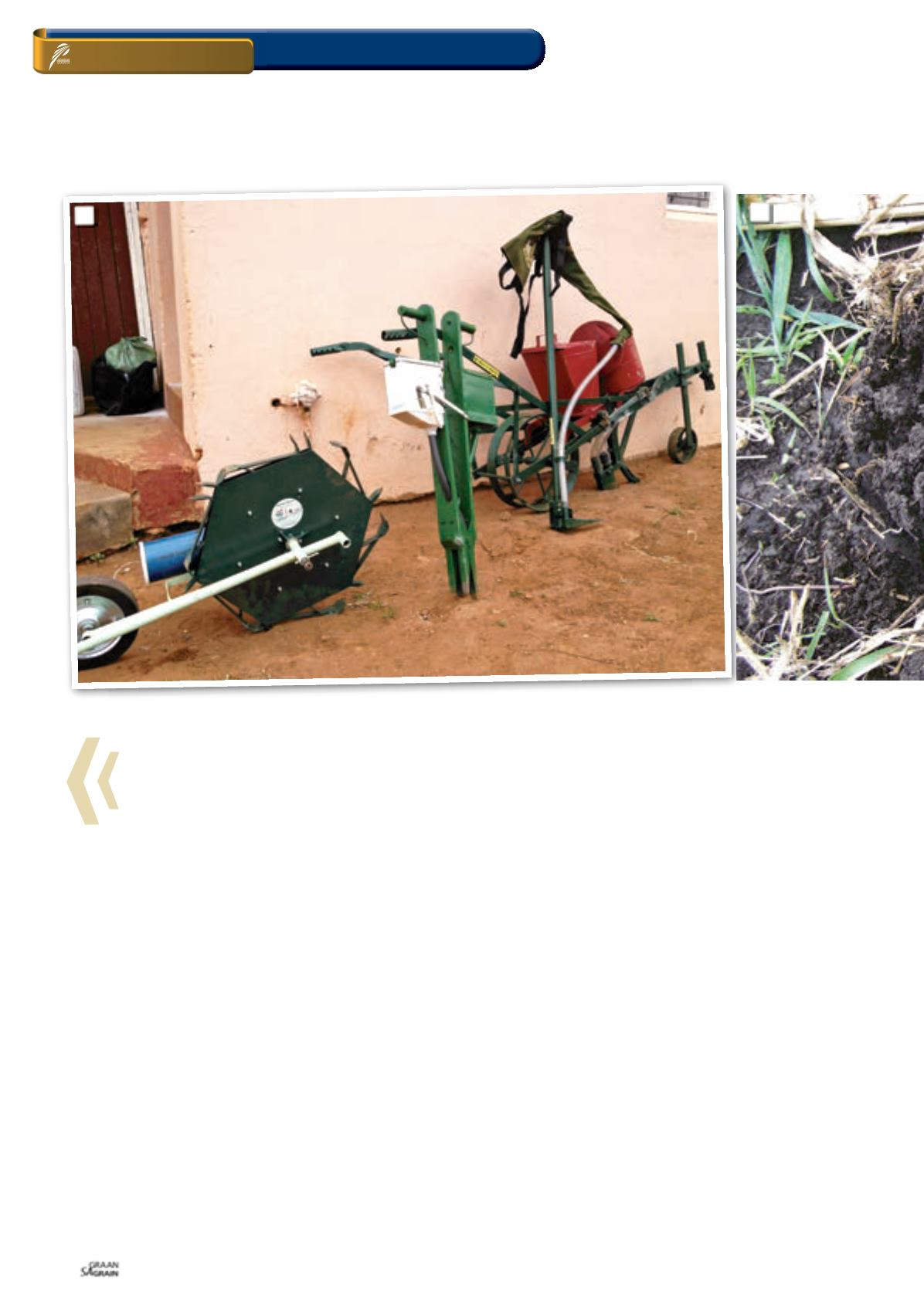
Maart 2014
80
disproportionally on longevity, so too do small increases in
personal material wealth have disproportionate effects on
community-level averages.
6. Increases farming systems resilience
Increased systems resilience is probably the single most
systemic, long-term benefit of CA; where “resilience” is “the
capacity of an ecosystem to tolerate disturbance without
collapsing into a qualitatively different state that is controlled
by a different set of processes”. In CA systems practice, the
promotion of diversity avoids the dangers of “placing all one’s
eggs in the same basket.” See
Photo 3
.
While producers know this instinctively, the rest of us should
bear in mind that CA systems are complex adaptive systems; i.e.
“systems of people and nature in which complexity emerges and
re-emerges dynamically and continuously from a small set of
critical self-reproducing processes that create and maintain the
self-organising and self-reproducing properties of the system”.
7. Diversifies human and animal food flows
Monoculture has well-known disadvantages and vulnerabilities
that have to be considered along with its (largely) industrial
benefits. Multi-cropping in CA systems, e.g. as in maize/
cowpea intercropping, achieves diversity of food supplies while
simultaneously producing fertility benefits in the soil. When CA
systems include green manure cover crops that can increase
animal fodder, the intercrop synergy that multiplies (instead of
only adding soil nutrients), and diversifies human food supplies,
also leads to better integration of livestock production and crop
farming.
8. Minimises labour requirements
The labour-saving benefits of CA translate directly into cash
savings that improve household financial security and it frees
up time to pursue new activities that can earn additional
income. Thus, when CA was compared in Africa to conventional
agriculture, CA saved 55% of the labour involved in land pre-
paration; 60% during land clearance and preparation and 70%
of the drudgery (mostly done by women) involved in weed
control. According to Sorrenson (1997), total annual tractor
hours fall quite sharply by the tenth year in CA compared to CT,
with consequential savings in tractor costs and permanent farm
labour. See
Photo 4a
and
Photo 4b
.
9. Alleviates the burden born by women
In most smallholder systems, women bear the brunt of onerous,
labour-intensive tasks. While CA reduces this drudgery directly,
it also has the beneficial side effect of making more time available
for the care of HIV/AIDS orphans. In South Africa – in statistical
equivalence with all developing countries where the rural poor
depend on agriculture for a living – we have 3 million subsistence
farmers among whom 78% are women.
10. Mitigates the impact of HIV/AIDS
Crop diversification through adoption of CA increases the
variety of locally grown food supplies and their quality. This
improves human nutrition – a key component of HIV/AIDS
mitigation. When the other all-round benefits of CA listed in this
article act in concert to improve agriculture, e.g. the beneficial
impact of CA adoption on the reduced level and energy demand
of physical labour, the tight link between culture, economics,
household finances and agriculture in smallholder agriculture,
4b
5
Transforming the benefits of conservation agriculture into
a pro-CA “manifesto”
ON FARM LEVEL
Conservation agriculture


